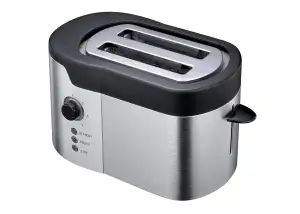Master the Art of Cooking with a Convection Oven: A Step-by-Step Guide for Home Chefs

- Understanding the Basics of a Convection Oven
- Preparing Your Convection Oven for Use
- Adjusting Cooking Times and Temperatures
- Utilizing the Convection Setting for Baking
- Using the Convection Setting for Roasting
- Mastering the Convection Setting for Broiling
- Exploring Other Cooking Functions of a Convection Oven
- Cleaning and Maintenance Tips for Your Convection Oven
Convection ovens have revolutionized the way we cook, providing faster and more efficient results. Unlike traditional ovens, which rely on radiant heat, convection ovens use a fan to circulate hot air evenly throughout the cooking chamber. This constant circulation of hot air ensures that food cooks more quickly and evenly, resulting in perfectly cooked dishes every time. Whether you're a seasoned chef or a novice home cook, mastering the art of cooking with a convection oven will elevate your culinary skills to new heights. In this step-by-step guide, we will explore the basics of convection ovens, learn how to adjust cooking times and temperatures, and discover the various cooking functions that make these appliances so versatile. Get ready to unlock a world of delicious possibilities with your convection oven!
Understanding the Basics of a Convection Oven
A convection oven is a kitchen appliance that uses fans to circulate hot air evenly around the food, resulting in faster and more efficient cooking. Unlike traditional ovens, which rely on radiant heat, convection ovens distribute heat evenly throughout the cooking chamber.
The main advantage of a convection oven is its ability to cook food more quickly. The circulating hot air ensures that heat reaches every corner of the oven, reducing cooking times by up to 25%. This makes it ideal for busy home chefs who want to save time without compromising on taste and quality.
Another benefit of a convection oven is its ability to cook food more evenly. The constant circulation of hot air prevents hot spots and cold spots, resulting in uniformly cooked dishes. This eliminates the need for frequent turning or rotating of food during the cooking process.
Additionally, using a convection oven can help achieve better browning and crisping. The continuous flow of hot air promotes caramelization, creating delicious golden crusts on baked goods and perfectly browned surfaces on meats.
It's important to note that not all recipes are designed for convection ovens. Some delicate dishes may require lower temperatures or shorter cooking times compared to traditional recipes. It's essential to understand how your specific convection oven works and adjust recipes accordingly.
In the next section, we will discuss how to prepare your convection oven for use so you can start enjoying all the benefits it has to offer in your culinary adventures.
Preparing Your Convection Oven for Use
Before you start cooking with your convection oven, it's important to properly prepare it for use. Here are a few steps to follow:
1. Read the manual: Familiarize yourself with the specific instructions and features of your convection oven by reading the user manual. This will help you understand how to operate it safely and efficiently.
2. Clean the oven: Before using your convection oven, make sure it is clean. Remove any food debris or spills from previous use. Use a mild detergent and warm water to wipe down the interior and exterior surfaces.
3. Check the racks: Ensure that the racks are properly positioned in the oven. Most convection ovens come with multiple racks, so adjust them according to your cooking needs. Make sure they are securely in place before starting.
4. Preheat the oven: Preheating is essential for optimal cooking results. Set your convection oven to the desired temperature and allow it to preheat for at least 10-15 minutes before placing any food inside.
5. Test the temperature accuracy: To ensure that your convection oven is heating accurately, you can use an oven thermometer. Place it inside the oven and compare its reading to the set temperature on your appliance.
By following these simple steps, you can ensure that your convection oven is ready for use and will provide consistent and reliable cooking results every time you use it.
Adjusting Cooking Times and Temperatures
One of the key benefits of cooking with a convection oven is its ability to cook food faster and more evenly. However, it's important to note that you may need to adjust your cooking times and temperatures when using a convection oven compared to a traditional oven.
Since convection ovens circulate hot air throughout the oven cavity, they tend to cook food faster than conventional ovens. As a general rule, you can reduce the cooking time by about 25% when using the convection setting. For example, if a recipe calls for baking at 350°F for 30 minutes in a regular oven, you would bake it at 350°F for approximately 22-23 minutes in a convection oven.
In terms of temperature adjustment, you can typically lower the temperature by about 25°F when using the convection setting. This is because the circulating hot air helps to distribute heat more efficiently, resulting in faster and more even cooking.
However, it's important to keep an eye on your food as it cooks since every recipe and oven may vary slightly. Start checking for doneness a few minutes before the recommended cooking time to avoid overcooking.
By adjusting your cooking times and temperatures accordingly, you'll be able to take full advantage of the efficiency and precision that a convection oven offers. Experiment with different settings and keep track of your adjustments for future reference.
Utilizing the Convection Setting for Baking
One of the greatest advantages of a convection oven is its ability to evenly bake your favorite dishes. When using the convection setting for baking, follow these simple steps to achieve perfect results every time.
1. Preheat the oven: Before you begin baking, preheat your convection oven to the desired temperature. This step ensures that the oven is at the optimal heat level for even cooking.
2. Adjust cooking time and temperature: When using the convection setting, it's important to adjust both the cooking time and temperature. In general, you can reduce the recommended baking temperature by 25 degrees Fahrenheit and decrease the cooking time by about 25%. However, it's always best to refer to your recipe or consult your oven's manual for specific guidelines.
3. Use shallow pans: To maximize airflow and ensure even baking, use shallow pans or baking sheets instead of deep dishes. This allows hot air to circulate around your food, resulting in a more uniform bake.
4. Rotate halfway through: To further promote even browning, rotate your baked goods halfway through the cooking process. This helps prevent any hot spots in your oven from causing uneven browning or overcooking.
5. Monitor closely: Keep a close eye on your baked goods as they cook in a convection oven. The circulating hot air may cause them to cook faster than in a traditional oven. Use a timer and visually check on their progress periodically to avoid overcooking.
By utilizing the convection setting for baking, you'll enjoy perfectly browned cookies, cakes with an even rise, and golden crusts on bread loaves. Experiment with different recipes and techniques to fully explore the potential of your convection oven for baking delicious treats!
Using the Convection Setting for Roasting
Roasting is a popular cooking method that brings out the natural flavors and textures of meats, vegetables, and even fruits. With a convection oven, you can take your roasting game to the next level.
To start, preheat your convection oven to the desired temperature. The convection setting will ensure even heat distribution, resulting in perfectly roasted dishes. Place your food on a roasting rack or directly on a baking sheet for optimal airflow.
When roasting with a convection oven, it's important to adjust the cooking time and temperature. As convection ovens circulate hot air around the food, they cook faster than traditional ovens. Reduce the cooking time by about 25% and lower the temperature by 25°F (15°C) compared to conventional recipes.
Keep an eye on your roast throughout the cooking process. The circulating hot air may cause it to brown more quickly than expected. To prevent overcooking or burning, use a meat thermometer to monitor internal temperatures.
The convection setting also helps achieve crispy exteriors while maintaining juicy interiors. The constant airflow ensures that heat reaches all sides of the food evenly, resulting in deliciously caramelized surfaces.
Remember to rotate your roast halfway through cooking for even browning. This will ensure that all sides are cooked uniformly and have that beautiful golden crust.
Whether you're roasting a succulent chicken, tender beef roast, or flavorful vegetables, using the convection setting in your oven will elevate your roasting game and impress your guests with mouthwatering results.
Mastering the Convection Setting for Broiling
Broiling is a cooking technique that involves exposing food to direct heat from above. With a convection oven, you can achieve even better results by utilizing the convection setting for broiling. Here's how to master this technique:
1. Preheat the oven: Set your convection oven to the broil setting and allow it to preheat for a few minutes. This ensures that the oven reaches the desired temperature for broiling.
2. Position the rack: Adjust the rack position in your oven so that the food will be placed close to the heating element. This allows for quick and efficient cooking.
3. Prepare the food: Season and prepare your food as desired. For broiling, it's best to use thinner cuts of meat or smaller pieces of fish or vegetables, as they cook quickly under high heat.
4. Use a broiler pan: Place your food on a broiler pan or a baking sheet with a wire rack. The elevated rack allows air to circulate around the food, ensuring even cooking and preventing it from sitting in its own juices.
5. Monitor closely: Keep a close eye on your food while it's broiling as it can cook rapidly under high heat. Use tongs or a spatula to flip or rotate the food halfway through cooking for even browning.
6. Adjust cooking time: Since convection ovens distribute heat more evenly, you may need to reduce the recommended broiling time by about 25%. Keep an eye on your food and adjust accordingly to avoid overcooking.
7. Let it rest: Once your food is done broiling, remove it from the oven and let it rest for a few minutes before serving. This allows any juices to redistribute within the meat, resulting in juicier and more flavorful dishes.
By mastering the convection setting for broiling in your convection oven, you can achieve perfectly caramelized steaks, crispy-skinned fish, and beautifully charred vegetables. Experiment with different recipes and techniques to elevate your broiling game and impress your guests with deliciously cooked dishes.
Exploring Other Cooking Functions of a Convection Oven
In addition to baking, roasting, and broiling, a convection oven offers various other cooking functions that can elevate your culinary skills. One such function is dehydrating, which allows you to make delicious homemade dried fruits, jerky, or even crispy kale chips. Simply set the temperature low and let the convection fan circulate the air evenly for perfect results.
Another useful function is proofing dough. Whether you're making bread or pizza dough, the convection oven provides an ideal environment for proofing by maintaining a consistent temperature and humidity level. This ensures that your dough rises perfectly every time.
Some convection ovens also come with a steam cooking function. This feature allows you to cook food using steam, which helps retain moisture and enhances flavors. From steamed vegetables to seafood delicacies, this function opens up a whole new world of healthy and tasty possibilities.
Lastly, many convection ovens have a slow cooking option. This setting allows you to cook dishes at low temperatures over an extended period, resulting in tender meats and flavorful stews. It's perfect for those days when you want to come home to a hot and hearty meal without spending hours in the kitchen.
With these additional cooking functions, a convection oven truly becomes a versatile tool in your kitchen arsenal. Experiment with different recipes and techniques to unlock endless culinary possibilities and impress your family and friends with your newfound skills.
Cleaning and Maintenance Tips for Your Convection Oven
Cleaning and maintaining your convection oven is essential to ensure its optimal performance and longevity. Here are some tips to help you keep your oven in top shape:
1. Regularly wipe down the interior of the oven with a damp cloth or sponge. Remove any food spills or residue immediately to prevent them from hardening and becoming difficult to clean later.
2. Use a mild detergent or oven cleaner specifically designed for convection ovens when necessary. Follow the manufacturer's instructions carefully, and avoid using abrasive cleaners that can damage the oven's surfaces.
3. Clean the oven racks separately by soaking them in warm soapy water for a few hours, then scrubbing them gently with a sponge or brush. Rinse thoroughly and allow them to dry completely before placing them back in the oven.
4. Clean the oven door regularly, both inside and out, using a glass cleaner or a mixture of vinegar and water. Wipe away any smudges or fingerprints for a clear view of your cooking progress.
5. Check and clean the convection fan regularly to remove any accumulated grease or debris that may affect its performance. Refer to your oven's manual for specific instructions on how to access and clean the fan.
6. Keep the exterior of your convection oven clean by wiping it down with a soft cloth dampened with mild soap and water. Avoid using abrasive materials that could scratch or damage the surface.
7. Schedule regular maintenance checks with a professional technician to ensure that all components of your convection oven are functioning properly. They can inspect and clean areas that may be difficult for you to access on your own.
By following these cleaning and maintenance tips, you can keep your convection oven in excellent condition, ensuring delicious results every time you use it.
In conclusion, cooking with a convection oven offers numerous benefits that can elevate your culinary skills to new heights. The even heat distribution and faster cooking times ensure that your dishes are cooked to perfection every time. The versatility of the convection setting allows you to bake, roast, broil, and explore various other cooking functions with ease. With proper maintenance and cleaning, your convection oven will continue to serve you for years to come. So why wait? Embrace the art of cooking with a convection oven and unlock a world of delicious possibilities in your kitchen.
Published: 07. 02. 2024
Category: Home



